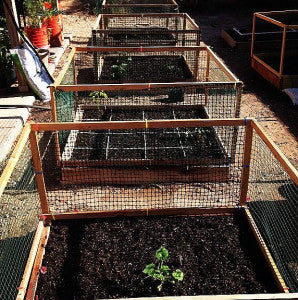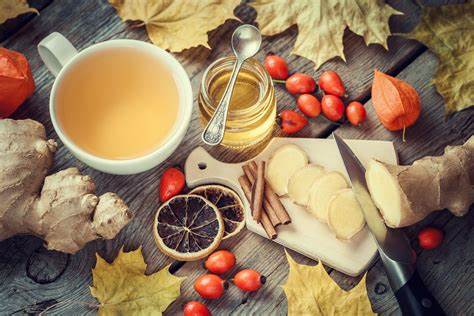Protecting Your Garden from Early Frost
Those of us who live in areas of early frost, dread to see our gardens destroyed by it. Often, tomatoes are at the peak of production when frost appears. Of course, frost either kills plants or slows plant growth. Few plants will grow during the coldest months at northern latitudes.
If you assume that you can only grow fresh vegetables or attractive flowers outside your home, this assumption is wrong. Fresh vegetables, as well as flowers, can be grown indoors without any difficulties or hassles.
Now, with certain modern innovations, it is possible to move gardens indoors for continued yields or even raise garden vegetables indoors. You won’t need a green thumb or a costly budget to achieve this. Plants can thrive indoors all winter under artificial lighting. So, if the right plant combinations are chosen, vegetable gardening can be a year-round activity with the right growing conditions inside. Keep in mind, though, that you probably won’t achieve indoors what you would in bright sunlight. Of course, expenditure of money and work often indicate results.
Indoor gardening in winter will not only improve how you feel, but it will provide fresh vegetables for you and your family.

Selecting the Proper Plants for Indoor Gardening
Because some plants are more demanding than others, indoor gardening means selecting the proper plants. Dwarf varieties of certain plants like tomatoes and peppers do very well under indoor conditions. Tomato plants do better if they are staked to bear the fruit’s weight. If the plants are shaken occasionally more pollen is released bearing more fruit.
Round varieties of carrots and radishes with shallow roots do well indoors if seeds are planted in late winter or mid-autumn.
Using LED or Fluorescent Grow Lights
Some garden vegetables can not be cultivated indoors because they are more demanding than others. However, most sun-loving edibles can be grown in containers under supplemental LED lights or fluorescent grow lights.
LED lights have become essential in a short time. They take less energy, grow plants better, and the lights do not need to be changed as frequently. Changing them often occurs from three to five years instead of three to five months. Select bulbs according to your gardening needs. For example, daylight white LEDs are for fast growth, blue LEDs are for larger yields, and red LEDs are for more productive plants.
Light is very important to plants. Without enough light, your plants will become leggy and photosynthesis won’t give them enough energy to grow well.
It is true that nothing takes the place of ”healthful doses of sunlight.” However, this lighting has many advantages. Bulbs do not have to be changed as often and this lighting takes less energy helping plants grow normally.
Why Use Lights?
Actually, plants in soil grow five times faster if the ideal climate is created by LED lights. Kits can be purchased for this purpose. These lights can also be used as supplementary lights to help plants grow. If many lights are needed, consider a commercial high-intensity discharge system. Also, remember that fluorescent lights, either fluorescent tubes or a series of compact fluorescent bulbs are good growing lights for small or medium indoor plants.
All plants require light in order to convert light, carbon dioxide, and water into sugars for feed so that plants will grow. And, also, each plant has a different light requirement.

What Plants Can Be Brought Inside
Think about bringing some of your hardier tomato plants indoors. Dig up the root ball of a healthy tomato, place it in a clean container with gravel and rocks in the bottom, and bring it indoors. Cutting off the top of the plant will encourage root growth. Be sure the soil is good containing compost. Fill the pot 3/4 full leaving space for watering. Green peppers can also be brought inside.
It is also possible to cut some slips when cutting back plants for a fall garden. Root them for indoor winter growth.
Lettuce, radishes, collards, green onions, peas, carrots, and herbs can be grown inside under lights. These not-so-tall plants tolerate less light and cooler temperatures. Actually, lettuces, leafy greens, sprouted seeds, radishes, carrots, and herbs are the easiest to grow as they tolerate cooler temperatures and limited light. They do not grow as tall and mature quickly.
What Flowers Bloom Indoors
Flowers such as amaryllis, hyacinth, and daffodils can be forced to bloom during winter months under lights. Impatiens and African violets will thrive through the winter months. Herbs include mints, creeping thyme, patchouli, parsley, cilantro, lemon verbena, oregano, rosemary, and bay. Also, included are edible blossoms such as nasturtium and violet and micro-greens sprouted from kohlrabi, sunflower, radish, and broccoli seed. Plants that bunch together also do well inside. These are plants like green onions, herbs, kale, and beans. Proper lighting means that the dwarf varieties of green peppers and tomatoes produce crops if grown under sufficient lighting.
Some evidence is present that during wartime, some people successfully raised beets in their basements. Beets are known for providing a lot of nutrients with low calories.
The Humidity Problem
One problem faced by some plant growers is humidity in winter. One suggestion is to keep a spray bottle filled with water and another is to install a humidifier. Some indoor gardeners keep fans going all the time to circulate the air.
Separating House Plants From Vegetables
One problem can be avoided by keeping vegetable growing areas separate from houseplants. Houseplants may be responsible for bringing aphids and insects into the garden area. If your plants have insect infestations such as white flies, aphids, or spider mites, wash or spray leaves with a mixture of mild soapy water.
Ideal Places for Growing Indoors
It is possible to grow some plants near a basement window without artificial light. For example, using a south-facing window for maximum sunlight, it is possible using cuttings to grow oregano, parsley, thyme, or even rosemary.
The Benefits of Indoor Gardening
If you are new to gardening, an indoor garden on a limited scale is a good way to learn the different aspects of gardening which helps a person move on to a garden outdoors. The knowledge you obtain will surely help with additional gardening efforts.
Indoor gardening has good results in that plants brighten homes, provide moisture to a dry indoor environment, and supply oxygen during the day. It is believed that indoor plants cut down cold-related diseases. They increase humidity levels and aid in purifying the air.
Many advantages are associated with homesteading with outdoor gardens, but there are even more advantages and benefits associated with gardening indoors. Indoor gardening can be a challenge. However, with a bit of knowledge, a few plants, and great expectations, indor gardening can be a joy to behold.





Leave a comment